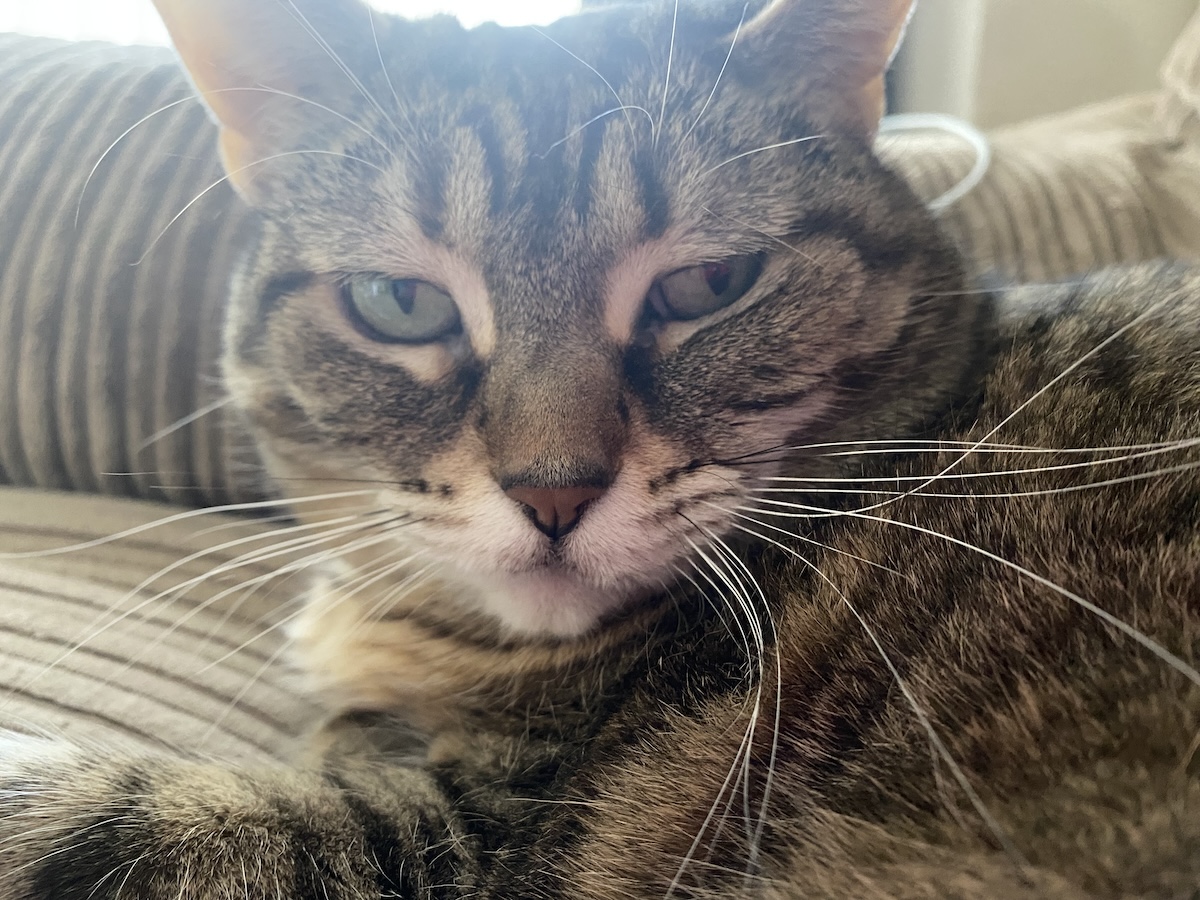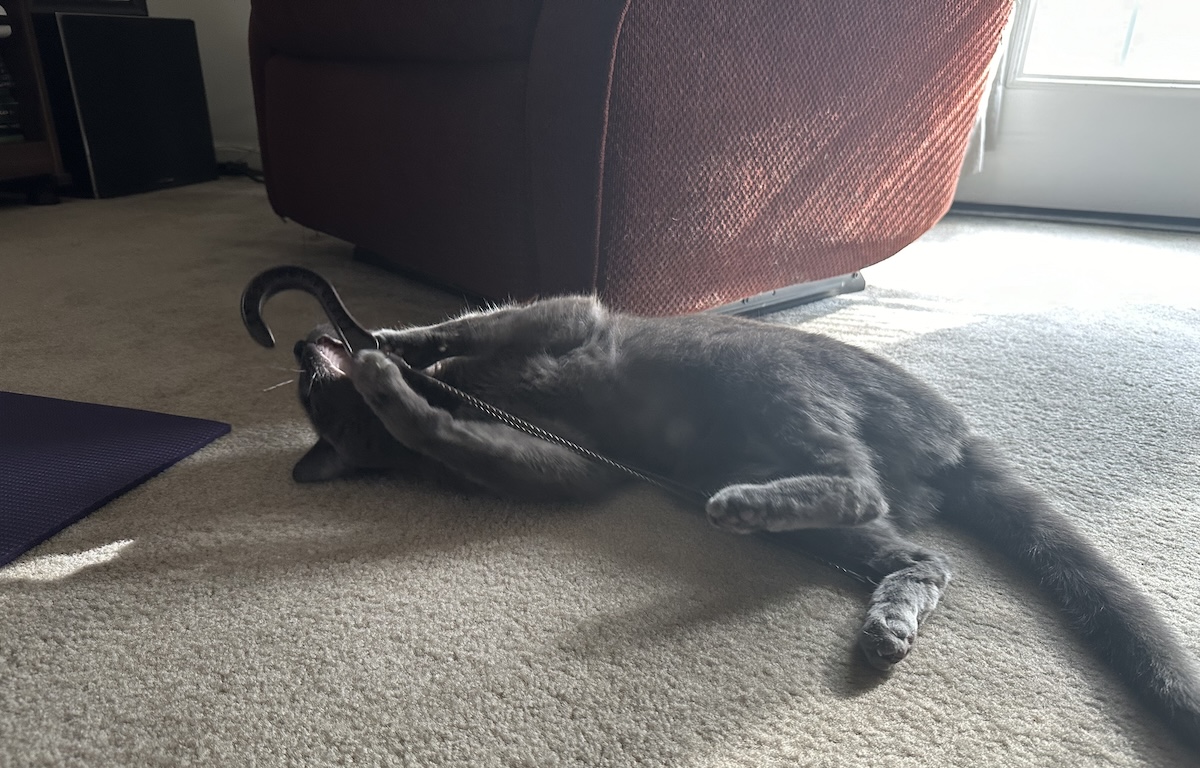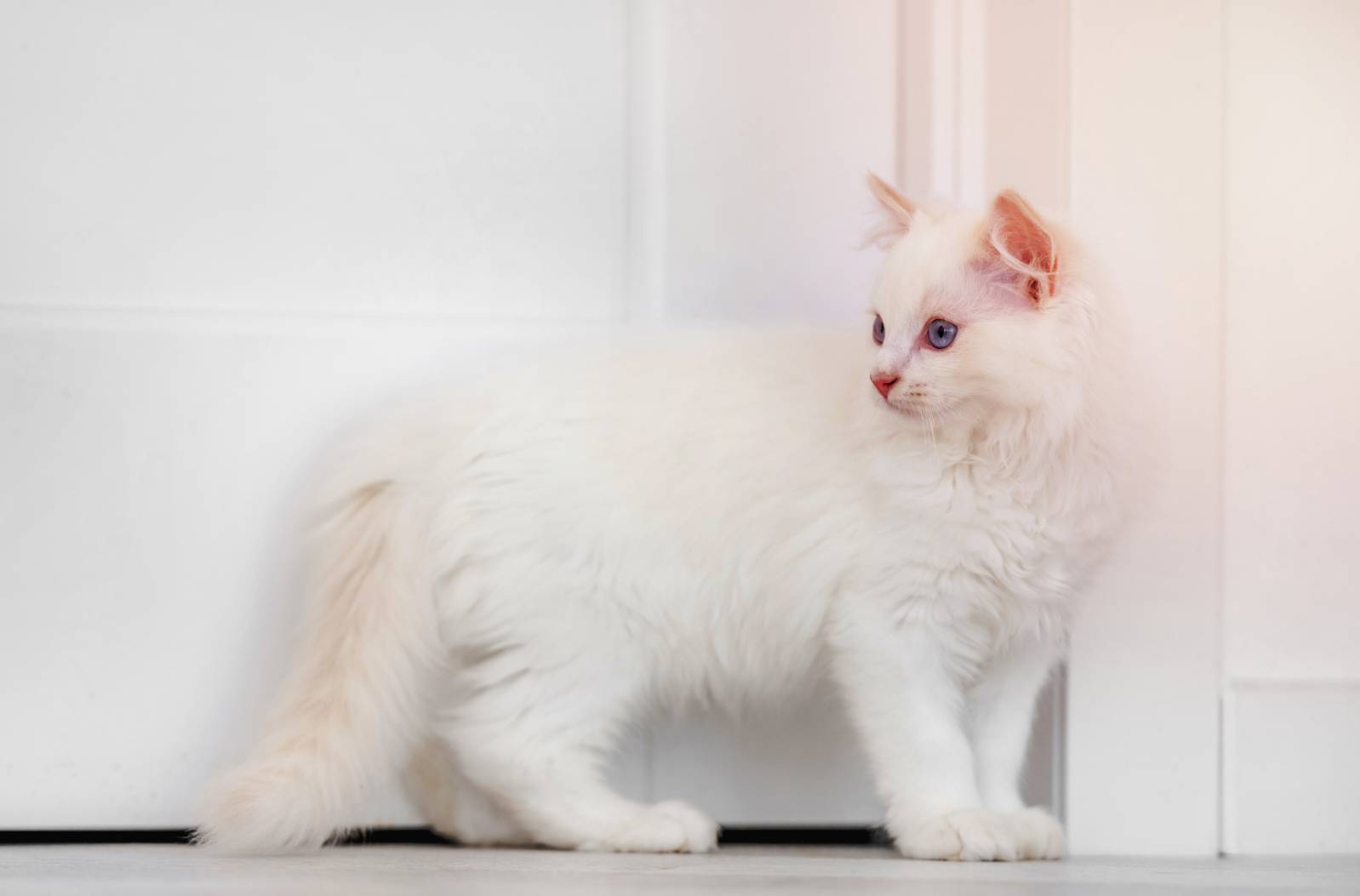Cats have roamed the earth for millions of years. All breeds of cats that we call “pets” were descended from one species, Felis sylvestris lybica, or the African Wildcat. However, the first “breed” of cat on earth was the forefather of all cat species and families, belonging to Felidae proailurus.
The Grandfathers of All Cats
Three major species of Proailurus lived around 33.9 million years ago, dating from fossils recovered from France and Mongolia and fossils in North America from 18.5 million years ago. The Proailurus species (P.bourbonnensis, P.lemanensis, and P.major) are the progenitors of all known felids, such as felines and pantherines, as well as some extinct species, such as Smilodon (a “saber-tooth” cat).
Fossils of P.lemanensis and P.bourbonnensis show the cats to be small in stature (only just bigger than modern house cats), weighing in at around 15–22lbs, while P.major was larger. They had large eyes, long tails, and very sharp (possibly retractable) claws. They also had sharp teeth similar to cats of the modern age, and they’re thought to resemble modern-day Viverrids, like Civets. Lastly, these prehistoric cats were likely, at least in part, arboreal, living in the trees and hunting for their prey.
What Was the First Real Cat Breed?
Fast-forwarding millions of years, the domestic cats we know and love today are descended from F.s.lybica, and traces of these cats living around and even with humans date back thousands of years. Archaeologists have discovered bone and teeth fragments of F.s.lybica intentionally buried with human remains in burial sites around the globe (dated to around 7,500 years old). However, evidence suggests that cat and human co-habitation could have started even earlier!
In Cyprus, a Neolithic burial ground was excavated, which found a human buried very purposefully with their cat1. This was dated to be around 9,500 years old. Not only is this evidence that the domestication process of African Wildcats started earlier than first thought, but also, no wild cats are native to Cyprus. This fascinating feline find suggests that the Neolithic people of the region traveled to the island and imported their beloved cats from the Middle East.
In many ways, the African Wildcat was the first true breed of cat to walk the earth, but we can delve even deeper and discover the oldest domesticated cat breed.
The Oldest Domesticated Cat Breed
It is generally accepted that most modern cat breeds were created within the last 150 years, with all breeds being registered with governing bodies within that time. However, the Egyptian Mau is the most likely candidate for the first-ever true cat breed. These cats are found as purposely bred cats and as “landrace” cats, or cats formed naturally through inbreeding between species. For example, the first domesticated African Wildcats would mate with wild ones, creating hybrids that then mated with domestic cats.
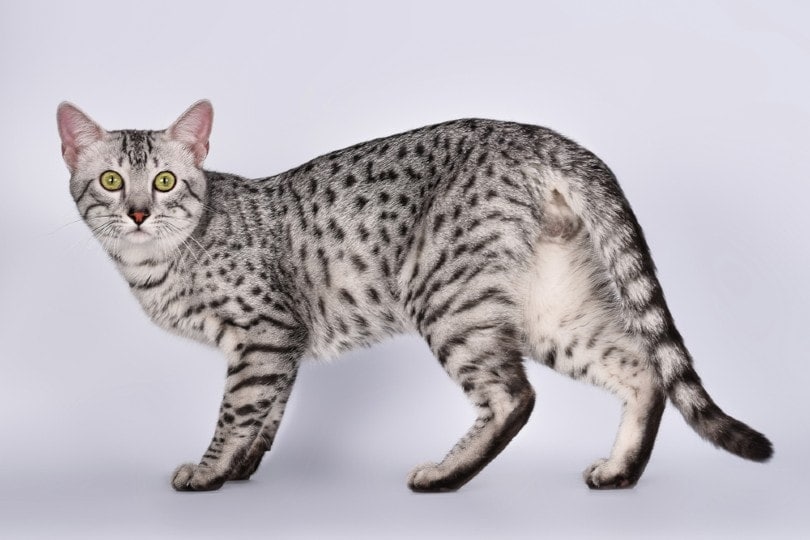
 When Were Cats First Domesticated?
When Were Cats First Domesticated?
Cats were first domesticated around 10,000 years ago in the Middle East and Egypt. Brave African Wildcats began teaching their young where to find food and how to behave to curry favor from the humans who lived around them.
This, in turn, shaped their behavior further. These cats eventually became used to living around people, and this process of self-selection would mean that cats essentially domesticated themselves. The cats reaped the benefit of extra prey (rodents that would raid human grain stores), and the humans began to see the benefits of keeping them around.
1. The Egyptians
Egyptians famously worshiped the felines, calling them Mau and burying beloved pets with their owners. Egyptians also bred the cats to be sacrificed to the feline-headed god Bastet. These domesticated cats soon spread around the world and reached Europe as early as 4,200 B.C.
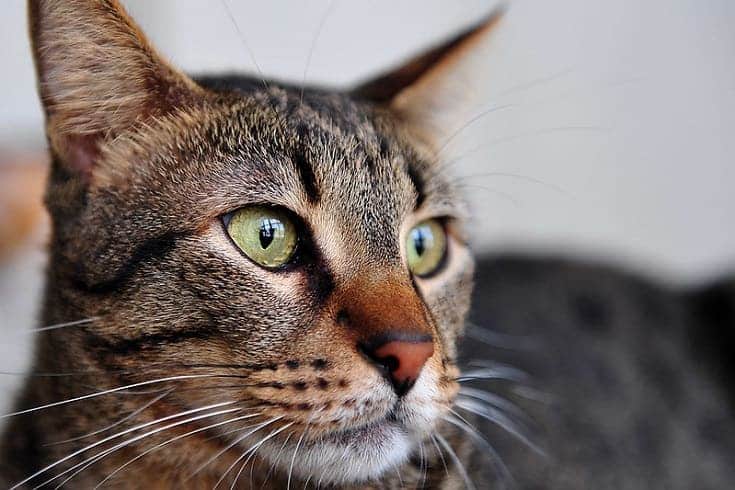
2. The Roman Empire
However, the primary spread of the modern domesticated cat is attributed to the Roman Empire, which ferried the cats from Greece to places in the Alexandrian Empire. The Romans used the cats as pest control on ships, spreading their influence (and kittens) across the ports of Europe. These cats also spread to Asia from established trade routes, creating the emergence of some of the oldest known cat breeds.
Breeds such as the Khorat, Birman, and Siamese all naturally distinguished themselves from other mixed breeds by interbreeding in the (relatively) small pool of individuals left in these areas. These were the base forms of the distinctive breeds we know today.
From there, cats jumped onto ships and proliferated all over the globe. Cats in Australia share DNA with the European domesticated cat, so we know they arrived on trade ships. In more recent times (in the last 150 years), cats have been selectively bred for certain characteristics. Coat color, body shape, hair length, etc., have all been molded by human hands. However, the house cat is still barely domesticated and shares an almost indistinct body plan and behaviors with the wild African Wildcat population today.
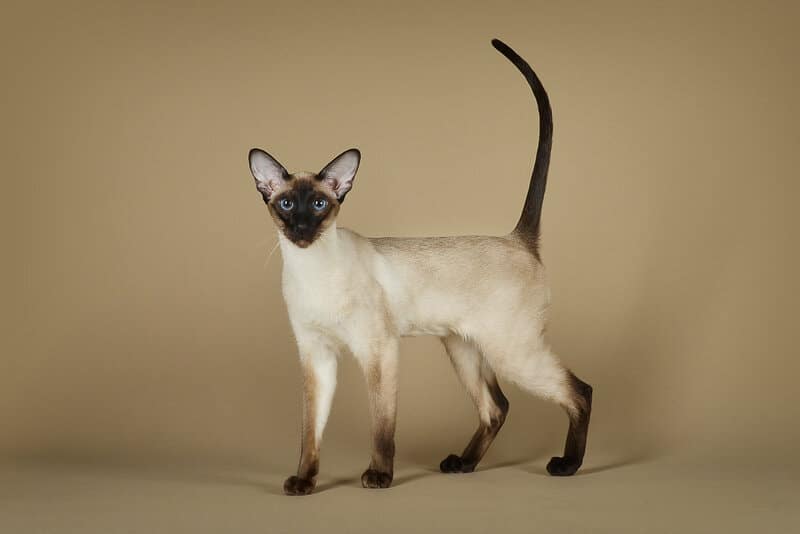
 Are Any Cat Breeds Extinct?
Are Any Cat Breeds Extinct?
There are some species of cat we know to be extinct—those living in prehistoric times being the first. While a few domesticated breeds of cats have petered out, there are still relatively recent species of cat that went extinct not so long ago. Panthera leo atrox, or the American Cave Lion, is one such species. Native to the U.S., P.l.atrox was a huge cat related to the African lions we see today. They were 25% bigger than modern lions, according to fossils!
Domesticated cat breeds that have gone extinct include the Mexican Hairless Cat and the Oregon Rex. The Mexican Hairless Cat looked similar to the Sphynx, with soft, light, downy hair covering its body. The Oregon Rex hailed from Oregon, U.S., and had a full coat of tightly curled hair. In the case of the Oregon Rex, these cats died out due to behavioral problems and the cats generally being of poor temperament.
What Is the Most Recently Discovered Cat?
The most recently discovered feline is a little cat found just outside southern Brazil that’s related to the Oncilla cat. Leopardus guttulus, or the Southern Tiger Cat, was recognized as a separate species in the last few years.
Final Thoughts
Felines have been around for millions of years, and all the cats we know of (both big and small) stem from one animal: the Proailurus. From there, all the cat species branched out across millions of years, growing into the big cats (like Panthera leo) and the small cats (Felis sylvestris) that live around us today. Cats almost domesticated themselves, at least compared to other species like dogs, and this happened long before we previously thought.
The oldest cat breeds as we know them were likely a proto-type mixed breed similar to the Egyptian Mau, but true distinction into breeds only really occurred as recently as 150 years ago.
Featured Image Credit: Max Holden, Shutterstock




 When Were Cats First Domesticated?
When Were Cats First Domesticated? Are Any Cat Breeds Extinct?
Are Any Cat Breeds Extinct?



